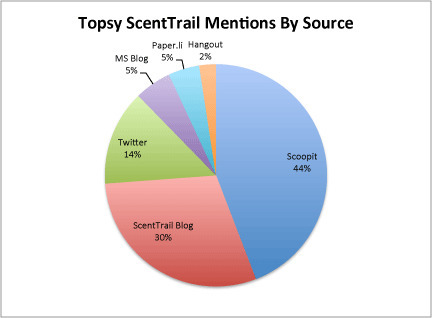Marty Note
Great post by Scoop.it team. At our cool tools for ecommerce merchants startup http://www.curagami.com we see all six of these mistakes. Here are some of the ways we've helped clients fix reasons their biz blogs sucked:
- No Subscription Form
Agree with this mistake being #1 since it cuts off your Internet marketing nose to spite your face. BUT adding a subscription form can be tricky. If a client has a vast archive we always locate a large search box in their header. If NOT we cross our fingers and put a subscription from up there.
We HATE subscription forms in footers since it since the WRONG message. Footer forms say, "Sure you can join, but we don't care." Best location is left rail somewhere below your hero (largest image on the page is a hero) and that means your left column should be navvy (i.e. about 200 - 300 pixels and have other nuggets like social in there too). We don't like being forced right either since we read left to right so stuff on the left typically gets more "eye time". WE HATE popunders those annoying requests to join that must be cleared BUT they work with enough people that most online merchants use them. Our answer to that is if everyone jumped off a cliff would you too and then we realize we are sounding like our parents so we shut up (lol). If you have to popunder use http://rocketbolt.com/ as they are the least obnoxious popunder we've seen. - Content Is Skinny & Stale
Blogs are a commitment. The deal you make is you WILL be blogging several times a week. Break that commitment and your biz blog will suck, never receive links and so you may as well stay home and watch TV for all the good adding less than 300+ posts a year will do you. Blogging is a discipline, a habit, your routine must incorporate if you want your content marketing to mean anything to visitors not related to you. Daily blogging gets easier the more you do it, but do it you must as fresh content is a huge part of the bargain you are striking with Google when you put a website into its view. Google is important, but your customers are even more important and they believe in QDF too (Quality Deserves Freshness), so blog it out. - No Relevant CTAs
Boy this is one of our HUGE pet peeves. If you don't have a BUTTON or LINK on your site that says the equivalent of CLICK ME THERE IS COOL STUFF HERE your biz blog sucks. CTAs are important, but you can have TOO MANY too, so strike a balance and ask for attention HERE and HERE. - No Related Links
Blogs are NASTY bad at building relevant next links. Without a plugin your blog will be backwards. Most default WordPress themes publish "archives" in reverse publishing order (most recent first). BTW, that sucks. You are better off to have related links at the bottom of a post AND create Top 5 lists across several dimensions such as popularity, most shared, most commented on, staff favorites and even bottom 5. Creating a priority list does wonders for content because it brings the MOB into play. We want to know what OTHERS think is interesting or bad or amazing. Lists work so USE 'em.
We think of content as products. We want to merchandise, combine and suggest content just like an ecommerce merchant creates cross-sale and up-sale. - Don't Leverage Analytics in PUBLIC
I'm sitting at a Panera Bread writing this and there is a big sign sharing that the owners shared $19M with charity last year. Public feedback loops such as Top 5 ordered lists and Most Searched summaries help your visitors know you, your content and your tribe. - No Social Shares or BAD Social Shares
Wow we could write a mile on this one, but we will give you the quick version. 1. Make it easy to share every page 2. Remember you want some shares for your SITE and some for the content people are reading now and those are two different things and need two different social widgets. 3. ALWAYS include your @name in your auto-tweets and shares.
Great post by the Scoop.iteers. Hope those ideas help you know how to fix six reasons your biz blog sucks. Time and web attention are way to valuable to ever SUCK. That is not to say we've never SUCKED (lol), but we try not to stink forever. Blog on :). M



 Your new post is loading...
Your new post is loading...



![Why I Don't Like Scoopit Links on Twitter [+Scenttrail Comment] | Curation Revolution | Scoop.it](https://img.scoop.it/0jOGI-xZjHycbocBgZ_llDl72eJkfbmt4t8yenImKBVvK0kTmF0xjctABnaLJIm9)






















Great tips to fix your blog.
If you didn't do it already do it now.